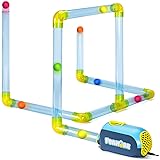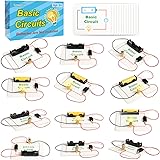Unlock Your Inner Designer: Mastering DIY Summer Clothes Revamps for Sustainable Style
Do you ever look at your summer wardrobe and wish for a fresh wave of creativity, perhaps even a touch of bespoke design without the hefty price tag? The visual inspiration above, showcasing a vibrant array of 30 stylish DIY summer clothes revamps, perfectly illustrates the potent magic of transforming existing garments. It’s an invitation to view your closet not as a static collection but as a dynamic atelier, ripe for a truly personalized fashion renaissance.
Engaging in DIY summer clothes revamps is more than just a hobby; it’s an embrace of circular fashion principles, a rebellion against fast fashion’s ephemeral trends, and a profound expression of personal style. This approach offers a powerful alternative to constantly purchasing new items, allowing for a unique, sustainable style narrative that is uniquely yours.
The Alchemy of Apparel: Deconstructing and Reimagining Your Wardrobe
At its core, fashion upcycling is a sophisticated form of textile alchemy. It involves a strategic deconstruction of a garment’s original form, followed by a creative reconstruction that bestows upon it a second, often more compelling, act. This process is far from mere mending; it’s a fundamental reimagining of a textile’s potential.
Furthermore, understanding the innate characteristics of different fabrics—their drape, elasticity, and how they respond to various treatments—is crucial. A seasoned upcycler approaches each piece with an almost architectural eye, envisioning its new silhouette before the first cut is even made. The transformation often begins with strategic reductions, like taking a dated maxi dress and converting it into a chic midi or a flowing tunic.
Strategic Slices and Daring Distressing: Sculpting New Silhouettes
The judicious application of the cutting tool can entirely redefine a garment. Consider the humble denim, a ubiquitous canvas for creative intervention. Transforming an old pair of jeans into tailored shorts, a denim skirt, or even a statement vest involves precise measurements and an understanding of seam allowances. Distressing techniques, from artfully placed rips to controlled fraying, add a layer of lived-in authenticity, moving beyond simple wear to intentional design.
Moreover, the deliberate removal of sleeves from a shirt or a collar from a jacket can instantly modernize a piece. It’s about recognizing where the original design’s “dead weight” lies and surgically removing it to reveal a more contemporary aesthetic. This often leads to surprising and highly personal results.
Silhouette Manipulation: Beyond the Seam
True garment metamorphosis extends beyond simple cuts. It delves into the manipulation of a garment’s fundamental silhouette, akin to a sculptor refining a block of marble. This might involve cinching an oversized dress with new elastic channels, adding darts to create a more fitted waist, or even grafting fabric from another piece to extend a hemline or add volume. It’s a dialogue between the existing fabric and the envisioned form.
Imagine, for example, taking a boxy men’s shirt and transforming it into a flattering, off-the-shoulder peasant blouse through careful pleating and elastic insertion. Or, an outdated A-line skirt could be re-engineered into a bias-cut dream with a few strategic pattern adjustments and a fresh elastic waistband. Such interventions require an understanding of patternmaking principles, even if applied intuitively.
The Artisan’s Touch: Embellishment and Adornment in Upcycling
Once a garment’s structure has been reimagined, the opportunity arises to infuse it with rich detail and texture. This is where the artistic flair truly comes into play, elevating a simple revamp to a piece of wearable art. These embellishment techniques are the flourishes that tell a story, transforming a generic item into a personal emblem.
Textural Play: Appliqué, Embroidery, and Patchwork
Embellishment techniques are the brushstrokes on your fabric canvas. Appliqué, the art of attaching smaller pieces of fabric onto a larger one, can add intricate patterns or bold statements. Consider transforming a plain denim jacket with a vibrant floral appliqué on the back, or geometric shapes for a modernist edge. Similarly, embroidery, whether hand-stitched with intricate patterns or machine-executed for consistency, introduces a sophisticated textural dimension.
Patchwork, a historical and now highly contemporary technique, allows for the intelligent repurposing of even the smallest fabric scraps. A patchwork panel integrated into a pair of shorts or a dress creates a bespoke, artisanal feel, mirroring the “crazy quilt” aesthetic in a refined, fashionable context. The juxtaposition of different textures and patterns can be truly mesmerizing.
Dyeing and Printing: A Canvas of Color
Color is arguably one of the most transformative elements in upcycling. A tired, faded garment can be completely revitalized through a fresh dye bath. Natural dyes, derived from plants and minerals, offer an eco-conscious alternative to synthetic options, yielding nuanced and earthy tones. Tie-dye, shibori, or even a simple immersion dye can turn a monochromatic piece into a vibrant statement.
Moreover, fabric printing techniques, from block printing to stenciling, allow for the application of custom patterns and motifs. Imagine a plain white t-shirt becoming a personalized masterpiece with a hand-stamped botanical print or an abstract geometric design. These methods enable an expert level of customization, providing endless creative solutions for your summer wardrobe.
Seasonal Specifics: Summer-Ready Garment Transformations
Summer fashion demands lightness, breathability, and a sense of effortless style. Our DIY summer clothes revamps should reflect this seasonal imperative, focusing on pieces that are comfortable, functional, and aesthetically pleasing in warmer climates. The goal is to create garments that feel fresh and embody the relaxed spirit of the season.
Beach-Bound Beauties: From Shirts to Cover-Ups
A men’s oversized button-down shirt is a prime candidate for a summer transformation. With a few snips and strategic seams, it can evolve into a chic beach cover-up, a tie-front crop top, or even a breezy tunic dress. The fabric, often light cotton or linen, is inherently suited for the heat. Adding fringed edges or cinching the waist with a drawcord further enhances its vacation-ready appeal.
Old towels, too, can be repurposed into functional and stylish items, like beach bags or even components for unique swimsuit cover-ups. The key is to think beyond the garment’s original intent and consider its fabric properties for new applications that align with summer activities.
Everyday Elegance: Elevating Casual Wear
For everyday summer wear, the focus shifts to comfort without sacrificing style. A simple t-shirt can be elevated into a more sophisticated piece by adding cut-out details, braiding the neckline, or integrating a lace panel. An old pair of trousers might become stylish culottes or a pair of tailored shorts, perfect for a garden party or a casual brunch. It’s about injecting subtle sophistication into otherwise utilitarian pieces.
Furthermore, outdated dresses can be given new life as skirts, or their tops can be separated to create unique crop tops when paired with high-waisted shorts. This modular approach to upcycling maximizes the utility of each component, creating versatile additions to your summer rotation.
The Expert’s Toolkit: Essential Gear for Garment Guerrillas
While creativity is the primary fuel for these transformations, a well-equipped workspace amplifies efficiency and precision. Essential tools include sharp fabric shears, a reliable sewing machine (though many projects are hand-stitch friendly), a seam ripper for controlled deconstruction, various needles and threads, and a rotary cutter with a self-healing mat for precise, straight cuts. Fabric markers or chalk are invaluable for marking alterations, and a good iron is critical for setting seams and preparing fabric.
Moreover, specialized tools like a serger can provide professional-grade finishes, though it’s not strictly necessary for most DIY projects. Investing in quality tools is akin to an artist selecting their finest brushes; they empower the creator to execute their vision with greater fidelity and less frustration.
Beyond the Stitch: The Eco-Impact of DIY Fashion
The allure of DIY summer clothes revamps extends far beyond personal aesthetics; it’s a powerful statement in the realm of environmental stewardship. The fashion industry is notoriously consumptive, contributing significantly to global waste. Annually, approximately 92 million tons of textile waste are generated, with much of it ending up in landfills. Upcycling directly combats this alarming statistic.
By extending the life cycle of clothing, we reduce the demand for new manufacturing, which in turn lessens the burden on natural resources, water, and energy. It’s an active participation in the slow fashion movement, where quality and longevity supersede transient trends. Each redesigned garment represents a tangible reduction in your personal carbon and waste footprint, making your summer style not just chic but also ethically conscious.
Embracing DIY summer clothes revamps is a commitment to a more sustainable, creative, and personalized approach to fashion. It is an acknowledgment that true style doesn’t reside in mass-produced trends but in the unique expression of individual ingenuity and a deep respect for the resources around us.







